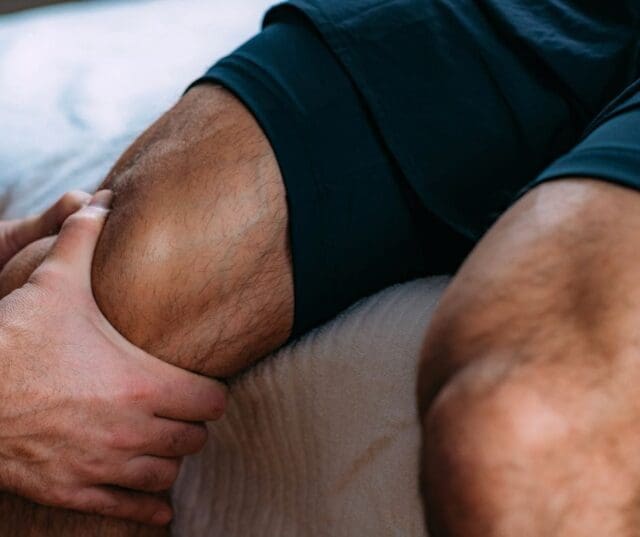The Healing Touch: Exploring the Benefits of Massage Therapy
Just when you think muscle tension is something you’ll have to live with, consider this: massage therapy could be the answer you’ve been looking for.
By applying pressure and manipulating your body tissues, massage relaxes your muscles and promotes blood circulation, alleviating tension.
It’s not just about feeling good; it’s a science-backed approach to muscle health and overall well-being.
But how exactly does it work, and what techniques are most effective?
To discover these answers, let Tea Garden Spa help you discover the fascinating world of massage therapy and its impacts on muscle tension.
Understanding Muscle Tension
In understanding muscle tension, it’s essential to know that it arises from tight, contracted muscles, often leading to stiffness, pain, and reduced flexibility. This discomfort can result from various factors, such as lack of movement, muscle imbalance, overuse, and inflexibility. The impact of stress on your body also plays a significant role in developing muscle tension.
The formation of collagen fibers around damaged tissues can further exacerbate the issue. These fibers create knots in your muscles, contributing to tightness and discomfort. This process can significantly affect your overall well-being and daily productivity.
However, it’s important to remember that each body reacts differently to the causes of tension. For instance, you might experience stiffness in your neck and shoulders due to stress, while someone else may have lower back pain from overuse.
Ultimately, understanding the causes and effects of muscle tension is the first step toward finding practical solutions. It’s necessary to pay attention to your body’s signals and seek professional help when needed. The next subtopic will explore how massage therapy can help alleviate this common issue.
The Science of Massage Therapy

Moving on from understanding muscle tension, let’s focus on massage therapy and explore how it works scientifically to alleviate this common issue. As you might already know, massage has multiple benefits, one of them being promoting muscle recovery. After an intense workout, for example, massage can minimize the effect of delayed onset muscle soreness (DOMS) and increase muscle recovery.
Through massage, your muscle fibers are stretched and loosened. This promotes relaxation and reduces the stiffness that often contributes to muscle tension. Moreover, massage therapy increases your muscles’ blood flow, oxygen, and nutrients, aiding their recovery. This enhanced circulation can also help in pain management, making massage therapy an effective method for alleviating discomfort.
The science of massage therapy can be boiled down to three primary points:
- Massage increases blood flow, supplying muscles with oxygen and nutrients.
- It aids in stretching and loosening muscle fibers, reducing stiffness.
- Massage promotes relaxation, hence aiding in pain management.
Techniques for Tension Relief
Let’s explore massage techniques such as deep tissue, myofascial release, and trigger points that effectively target tight muscles and relieve tension. These practical techniques involve muscle manipulation, breaking down adhesions, reducing congestion, and addressing knots causing tension.
The deep tissue massage, for instance, targets the inner layers of your muscles and connective tissues. This technique reduces inflammation and promotes faster healing by increasing blood flow to the affected areas. On the other hand, myofascial release focuses on pain believed to arise from the myofascial tissues — the tough membranes that wrap around your muscles.
Trigger pointing is another muscle therapy technique often used to treat localized muscle pain. It involves applying direct pressure to specific points on your muscles to release tension.
All these techniques not only provide muscle relief but also promote deep relaxation. They increase tissue elasticity, reduce pain, and improve your range of movement and flexibility. Whether dealing with acute pain, preparing your muscles for activity, or simply looking to unwind, these massage techniques can help decrease muscular tightness, release tension, and improve well-being.
Types of Massages for Tight Muscles

Building on the techniques mentioned earlier, it’s worth noting that specific types of massages are designed to alleviate muscle tightness effectively. These specialized massages target knots, promote muscle release, and relieve tension.
The first type to contemplate is the deep tissue massage. It targets the deep layers of your muscles, releasing tension and improving mobility. The Sports Massage, on the other hand, focuses on relieving tightness in specific areas commonly engaged during athletic activities.
Another type to explore is the remedial massage, which is tailored to address your specific muscle issues and imbalances, helping to restore function and reduce discomfort.
Let’s also ponder the following:
- Trigger Point Massage: This technique targets specific ‘trigger points’ in your muscles, releasing the knots and easing tightness.
- Gastrocnemius Muscle Release: A specialized technique ideal for those with tight calf muscles. It works by applying pressure and stretching the muscle for relief.
Role of Massage in Muscle Relaxation
Understanding the role of massage in muscle relaxation begins with recognizing how it increases blood flow, supplying muscles with much-needed oxygen and nutrients, thereby promoting relaxation and reducing tension. This process aids immensely in muscle recovery. Massage enhances tissue elasticity and reduces stiffness and tightness, further promoting relaxation.
Techniques like deep strokes, kneading, and skin rolling are commonly used during massages to stimulate muscle relaxation and decrease tension. You’ll notice reduced pain and relaxation as your therapist uses these techniques. This isn’t just physical relaxation but psychological, offering stress relief on multiple levels.
One significant aspect of massage is its role in pain management. As it alleviates muscle tension, massage also mitigates the stiffness, pain, and fatigue that comes with it. Hence, it’s not just about relaxation but also about managing and reducing the discomfort that muscle tension brings.
Benefits of Regular Massage
Regular massage offers many benefits, such as reducing muscle tension by promoting relaxation and enhancing muscle blood flow. With consistent use, you’ll notice decreased stress and increased overall well-being and physical health.
One of the primary advantages is stress reduction. By promoting relaxation, regular massage can help you manage the daily stresses of life more effectively. Moreover, it improves circulation, ensuring your muscles receive the oxygen and nutrients they need to function at their best.
Next, it’s worth noting that regular massage therapy is a powerful tool for pain management. Loosening tight muscle fibers can alleviate stiffness and fatigue associated with muscle tension. Additionally, it increases your flexibility, enhances your range of motion, and reduces the risk of muscle strain.
Finally, consider the role of regular massage in enhancing recovery. It not only aids in the immediate relief of muscle tension but also promotes long-term muscle health.
Here are some of the benefits to remember:
- Stress reduction and improved circulation
- Pain management and increased flexibility
- Enhanced recovery and relaxation
Incorporating regular massage into your routine can significantly improve your muscle health and overall well-being.

Prevention of Muscle Injuries With Massage
In addition to relieving tension and promoting overall well-being, massage can significantly prevent muscle injuries. As part of your wellness routine, regular massage therapy can aid in injury prevention. By improving muscle flexibility, reducing tension, and promoting proper muscle function, you’re less likely to experience strains or tears during physical activities.
Enhanced blood flow to your muscles is one of the main benefits of massage. This improvement in nutrient delivery and oxygen supply aids in muscle recovery. As a result, your muscles maintain their health and prevent stiffness, reducing the risk of injury.
Targeting specific muscle groups prone to injury is an effective method of muscle therapy. Massage identifies and alleviates tension and tightness that could potentially lead to injury. Techniques like myofascial release and trigger point therapy are particularly beneficial. They address muscle imbalances and prevent overuse injuries by promoting muscle relaxation and tension reduction.
Nurturing Wellness: Embracing the Healing Power of Massage
The benefits of massage therapy for relieving muscle tension are tangible and scientifically supported. By understanding the causes and effects of muscle tension, we can appreciate how massage therapy effectively addresses this common issue. Through techniques like deep tissue massage, myofascial release, and trigger point therapy, individuals can experience significant relief from muscle tightness and discomfort.
Regular massage promotes relaxation and reduces stress, pain management, and overall well-being. You can improve muscle health, flexibility, and recovery by incorporating massage into your routine. Moreover, massage therapy is a preventative measure against muscle injuries, making it a necessity rather than a luxury.
Tea Garden Spa, located at the historic Elk Forge Inn in Elkton, Maryland, offers a serene environment where guests can experience the transformative effects of massage therapy. With a range of luxurious spa treatments designed to promote relaxation and well-being, Tea Garden Spa allows one to prioritize self-care and nurture both body and mind. So why not indulge in a massage at Tea Garden Spa? Make your reservations today! Your muscles will thank you for it.
